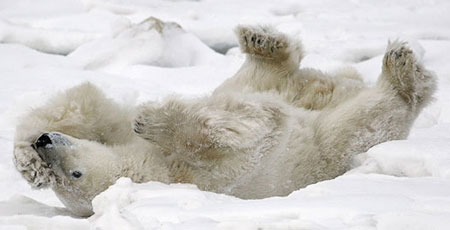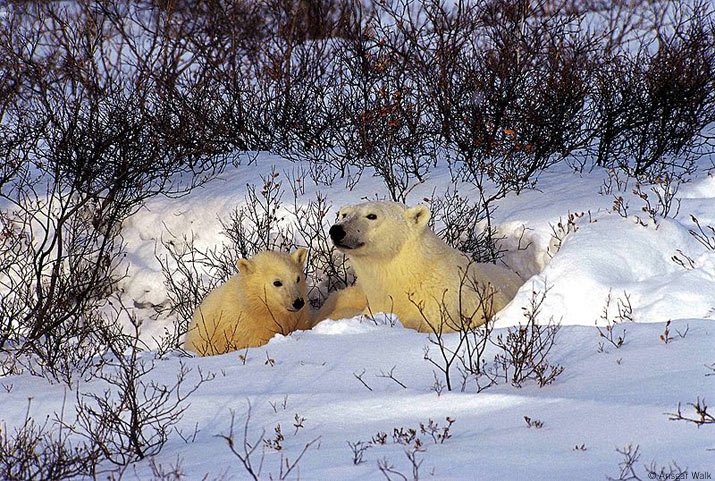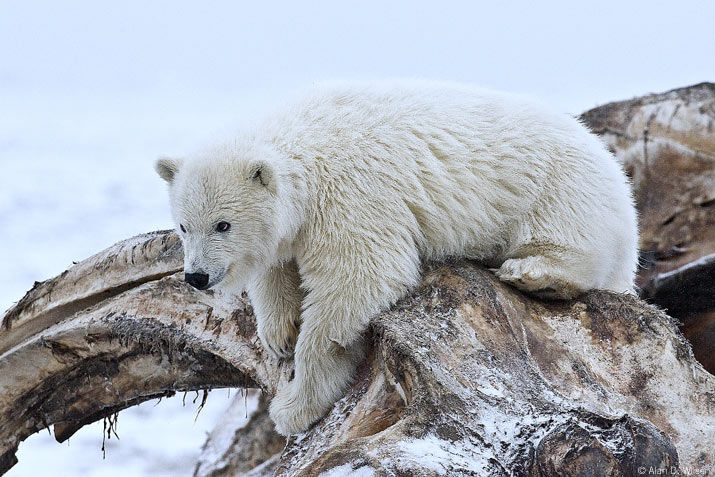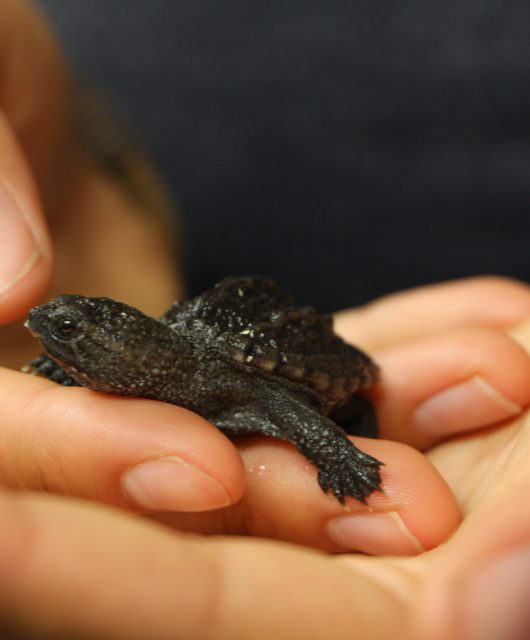
Polar bears are one of the most well-known and recognizable Canadian species. These bears are Canada’s largest land carnivore, with adult males weighing up to 800 kilograms (1,763 pounds). The white coats of the adults often appear cream to yellow against the dazzling whiteness of their home, the arctic pack ice.
Polar bears live throughout the North, along the coastlines and throughout the arctic islands from Hudson Bay to the North pole. Different regions have different groups of bears, called subpopulations. Polar bears prefer to live in areas near sea ice to catch their favourite prey, ringed seals. Because of this, some subpopulations face long-term threats due to climate change. As the water gets warmer each year, the ice shrinks, making it difficult for polar bears to hunt enough seals to survive.
What is CWF doing to help polar bears and other arctic wildlife?

CWF is working towards the long-term survival of polar bears by monitoring behaviour shifts in response to changes in their habitat, advocating for polar bear-friendly legislative protection, and by engaging the public on climate change.
Monitoring the current trends of the polar bear is crucial, as this data helps citizens, businesses, and government make informed decisions about the future of polar bears. Since May 2012, CWF has partnered with researchers at York University to study the feeding habits and lifestyle of the Hudson Bay subpopulation. The majority of this work was done in Northern Ontario (James Bay area).
CWF is also working with government to ensure a proper management plan is in place. This includes sharing research and bear trends with the Committee on the Status of Endangered Wildlife in Canada, or COSEWIC. This committee advises federal politicians on which species should receive special protection under the Federal Species at Risk Act in Canada.

As individuals, we can help wildlife like Polar bears by reducing our consumption of greenhouse-emitting gases and household pollution. Each time we use energy, small amounts of carbon are emitted, either by our furnaces or through power plants. Reducing energy usage in the home, and cutting back on the amount we drive, can help reduce our personal pollution. Through online and mail communications, like Candian Wildlife magazine, CWF informs Canadians about the ways they can reduce their emissions. If we all work together, this can help slow negative changes to polar bear habitats.
Together, through safeguarding their habitat, we can help the recovery of these amazing animals!
Learn more about polar bears:

